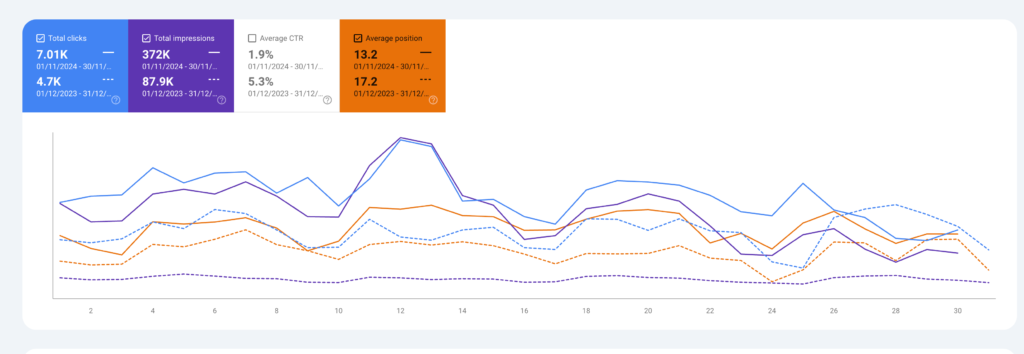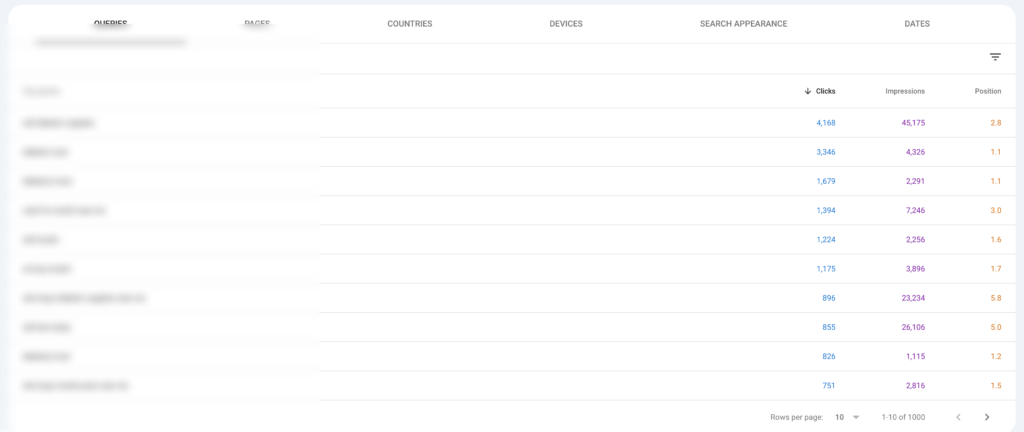

In December 2024, my website rankings took a hit. After two years of steady growth, the drop was noticeable. It was frustrating to see all that progress affected in a matter of weeks.
Instead of panicking, I decided to take action. I knew something needed to change, and it started with my content.
This is the step by step process I followed to recover my rankings and ensure my site was ready for long-term success.
What Happened in December 2024
When Google’s core update rolled out, I noticed a steady decline in traffic. Some of my top-ranking pages lost their positions, and a few keywords disappeared from the first page entirely.
The reason? My content.
Content that was once valuable had become outdated. Some pages didn’t align with current search intent. Others didn’t provide enough value to the audience.
Google’s algorithms reward relevance and user satisfaction. My site wasn’t meeting the mark anymore.
Step 1: Identifying the Problem

The first step was to figure out exactly what went wrong. I analyzed my site using these methods:
Checked Google Search Console:
→ I reviewed the performance report to see which pages and keywords had dropped.
→ I looked for patterns in the decline were specific topics or pages hit harder?
Reviewed Analytics Data:
→ I compared traffic trends before and after the update.
→ Bounce rates and session durations helped identify pages that weren’t engaging users.
Examined Search Intent:
→ I researched the updated search intent behind my target keywords.
→ Some of my pages no longer aligned with what users were actually searching for.
This analysis showed me where the gaps were and which pages needed the most attention.
Step 2: Removing Low Value Content
I started by removing content that wasn’t helping my site. This included:
→ Pages with outdated information.
→ Content that wasn’t answering any real user questions.
→ Posts that were thin or lacked depth.
Deleting content can feel counterintuitive. After all, it’s hard to let go of work you’ve spent time creating. But keeping irrelevant or weak content can hurt your site more than help it.
Google values quality over quantity. Removing low value content allows your stronger pages to shine.
Step 3: Updating Existing Content
Once I cleaned up my site, I focused on updating my remaining pages.
Here’s what I did:
Refreshed Old Information:
→ I added new statistics, examples, and references to make the content more relevant.
→ I removed outdated advice and replaced it with actionable, up to date insights.
Improved Search Intent Match:
→ I re-optimized my pages to match current search intent.
For example, if users were now looking for step by step guides instead of general advice, I adjusted my content format accordingly.
Added More Value:
→ I expanded on existing topics, providing deeper insights and practical tips.
→ I included FAQs, additional examples, and case studies where relevant.
Improved Readability:
→ I broke up long paragraphs into shorter sections.
→ I used subheadings, bullet points, and images to make the content easier to scan.
Updating content isn’t just about keeping Google happy it’s about serving your audience better.
Step 4: Strengthening Internal Links
I also worked on improving internal linking across my site.
This included:
→ Linking related pages together to create a logical flow for users.
→ Ensuring all links added value and helped readers find what they needed.
→ Updating anchor text to better reflect the linked content.
Internal links help search engines understand the structure of your site. They also keep users engaged by guiding them to relevant content.
Step 5: Monitoring Results

After making these changes, I closely monitored my site’s performance.
I used Google Search Console to track:
→ Keyword rankings.
→ Impressions and clicks.
→ Changes in average position.
I also kept an eye on user behavior in Google Analytics, focusing on:
→ Bounce rates.
→ Time on page.
→ Pages per session.
The results started to show within a few weeks. Traffic began to recover, and rankings improved. Many of my keywords climbed back to the top three positions.
Lessons Learned
Here’s what I learned from this experience:
Content Needs Regular Updates:
Even high ranking content won’t stay relevant forever. To maintain growth, you need to revisit and refresh your pages regularly.
Quality Always Wins:
Thin or outdated content won’t cut it. Focus on creating valuable, in depth resources that truly help your audience.
Search Intent is Key:
Understanding what users want and how that evolves over time is critical for staying competitive.
Be Proactive, Not Reactive:
Don’t wait for rankings to drop before you take action. Make content audits a regular part of your strategy.
How This Applies to Your Business
If your website rankings have dropped, don’t wait for things to improve on their own. Start by analyzing your content.
→ Remove pages that no longer add value.
→ Update high-potential pages with fresh information.
→ Make sure your content is solving real problems for your audience.
Businesses looking for long-term growth need to treat their website like a living, breathing asset. It’s not something you set up once and forget about.
It needs care, attention, and regular updates to stay competitive.



